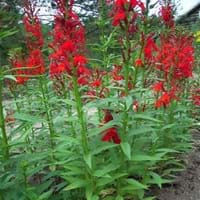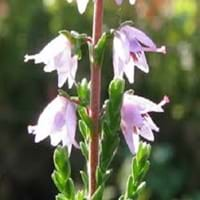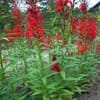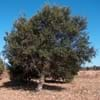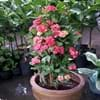Life Span
Perennial
Perennial
Origin
United States, Southeastern United States, South-Central United States, Texas, Mexico
Europe, Eastern Europe, Southern Europe
Types
Not Available
Not Available
Habitat
Cultivated Beds
Forest margins, gardens, Grassland, Homesteads
USDA Hardiness Zone
8-11
5-7
Sunset Zone
H1, 8, 9, 12, 13, 14, 15, 16, 17, 18, 19, 20, 21, 22, 23, 24
2a, 2b, 3a, 3b, 4, 5, 6, 7, 8, 9, 10, 14, 15, 16, 17, 18, 19, 20, 21, 22, 23, 24
Habit
Upright/Erect
Prostrate/Trailing
Flower Color
Red, Magenta, Orange Red
White, Purple, Pink, Light Pink, Rose, Lavender
Flower Color Modifier
Not Available
Not Available
Fruit Color
Brown, Red
Brown
Leaf Color in Spring
Green, Blue Green
Green
Leaf Color in Summer
Green, Blue Green
Green
Leaf Color in Fall
Green, Blue Green
Red, Green, Burgundy
Leaf Color in Winter
Not Available
Red, Green, Burgundy
Leaf Shape
Arrowhead
Grass like
Plant Season
Spring, Summer, Fall
Spring, Fall, Winter
Sunlight
Full Sun, Partial Sun, Partial shade
Full Sun, Partial Sun
Type of Soil
Loam, Sand
Loam, Sand
The pH of Soil
Acidic, Neutral, Alkaline
Acidic, Neutral
Soil Drainage
Well drained
Well drained
Bloom Time
Early Summer, Summer, Late Summer
Early Spring, Late Winter
Tolerances
Drought
Not Available
Where to Plant?
Ground, Pot
Ground
How to Plant?
Seedlings
Seedlings
Plant Maintenance
Medium
Medium
Watering Requirements
Average Water Needs
Do Not over Water, Keep the ground moist but not water-logged, Over-head watering, Requires watering in the growing season, Water when soil is dry
In Summer
Lots of watering
Lots of watering
In Spring
Moderate
Moderate
In Winter
Average Water
Average Water
Soil pH
Acidic, Neutral, Alkaline
Acidic, Neutral
Soil Type
Loam, Sand
Loam, Sand
Soil Drainage Capacity
Well drained
Well drained
Sun Exposure
Full Sun, Partial Sun, Partial shade
Full Sun, Partial Sun
Pruning
Remove damaged leaves, Remove dead branches, Remove dead leaves
Remove damaged leaves, Remove dead branches, Remove dead leaves
Fertilizers
Apply 10-10-10 amount
All-Purpose Liquid Fertilizer
Pests and Diseases
No serious insect or disease problems
Red blotch
Plant Tolerance
Drought
Drought
Flower Petal Number
Single
Not Available
Foliage Texture
Medium
Fine
Foliage Sheen
Matte
Matte
Attracts
Hummingbirds
Not Available
Allergy
Toxic
Not Available
Aesthetic Uses
Borders
Beautification
Beauty Benefits
Not Available
Not Available
Environmental Uses
Air purification
Air purification
Medicinal Uses
Antiemetic, Diuretic, Purgative, Tonic
Not Available
Part of Plant Used
Flowers, Leaves
Whole plant
Other Uses
Used as a general tonic, Used as a rat poison, Used as a vegetable
Used as Ornamental plant
Used As Indoor Plant
No
Yes
Used As Outdoor Plant
Yes
Yes
Garden Design
Feature Plant, Foundation, Mixed Border, Rock Garden, Wall, Wildflower
Alpine, Groundcover, Rock Garden, Wall
Botanical Name
ERYTHRINA herbacea
ERICA carnea
Common Name
Red cardinal, Cardinal spear
Winter heath
In Hindi
Red Cardinal
अल्पाइन हीथ
In German
Red Cardinal
Alpine Heath
In French
Cardinal rouge
Alpine Heath
In Spanish
Cárdenas
Alpine Heath
In Greek
κόκκινο Καρδινάλιος
Alpine Heath
In Portuguese
Cardeal vermelho
Alpine Heath
In Polish
Red Cardinal
Alpine Heath
In Latin
Cardinalis Rubrum
Alpini Heath
Phylum
Magnoliophyta
Not Available
Class
Magnoliopsida
Magnoliopsida
Family
Fabaceae
Ericaceae
Clade
Angiosperms, Eudicots, Rosids
Angiosperms, Asterids, Eudicots
Subfamily
Faboideae
Ericoideae
Number of Species
Not Available
Not Available
Importance of Red Cardinal and Alpine Heath
Want to have the most appropriate plant for your garden? You might want to know the importance of Red Cardinal and Alpine Heath. Basically, these two plants vary in many aspects. Compare Red Cardinal and Alpine Heath as they differ in many characteristics such as their life, care, benefits, facts, etc. Every gardener must at least have the slightest clue about the plants he wants to plant in his garden. Compare their benefits, which differ in many ways like facts and uses. The medicinal use of Red Cardinal is Antiemetic, Diuretic, Purgative and Tonic whereas of Alpine Heath is Not Available. Red Cardinal has beauty benefits as follows: Not Available while Alpine Heath has beauty benefits as follows: Not Available.
Compare Facts of Red Cardinal vs Alpine Heath
How to choose the best garden plant for your garden depending upon its facts? Here garden plant comparison will help you to solve this query. Compare the facts of Red Cardinal vs Alpine Heath and know which one to choose. As garden plants have benefits and other uses, allergy is also a major drawback of plants for some people. Allergic reactions of Red Cardinal are Toxic whereas of Alpine Heath have Not Available respectively. Having a fruit bearing plant in your garden can be a plus point of your garden. Red Cardinal has showy fruits and Alpine Heath has no showy fruits. Also Red Cardinal is not flowering and Alpine Heath is not flowering . You can compare Red Cardinal and Alpine Heath facts and facts of other plants too.
